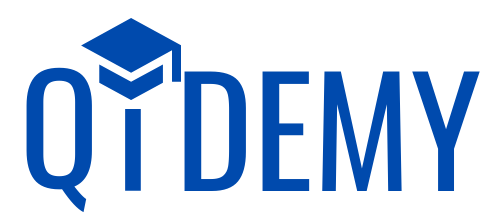Continuous improvement is a vital component of any successful business strategy. By continuously striving for better results, businesses can boost their efficiency, reduce costs, and enhance the quality of their products or services. Two popular improvement methodologies that businesses use are Kaizen and Kaikaku. While both methodologies aim to drive continuous improvement, they differ in their approach and philosophy.
Kaizen is a Japanese term that means “change for better” and is a philosophy that focuses on making small, incremental improvements to processes and systems.
On the other hand, Kaikaku, also a Japanese term, translates to “radical change” and is a philosophy that emphasizes making significant, transformative changes to an entire system.
In this blog, we’ll take a closer look at Kaizen and Kaikaku, their principles and philosophies, the tools and techniques used in each, and some successful implementation examples.
We’ll also explore the differences between the two methodologies and help you determine which one may be best suited for your business.
So, whether you’re a small business owner or a manager of a large corporation, read on to learn more about choosing the right improvement strategy for your business.
Table of Contents
What is Kaizen?
Kaizen is a Japanese philosophy of continuous improvement that focuses on making small, incremental changes to processes and systems. The word “Kaizen” is a combination of two Japanese words, “Kai” meaning change, and “Zen” meaning good.
The concept of Kaizen originated in Japan after World War II when the country’s economy was in shambles, and companies were looking for ways to improve their production processes.
The principles of Kaizen are rooted in the belief that even the smallest improvement can have a significant impact on the overall performance of a company.
The philosophy emphasizes the importance of empowering employees at all levels to identify areas of improvement and make suggestions for changes.
The goal is to create a culture of continuous improvement, where every employee is committed to making small, incremental changes that lead to significant improvements over time.
Kaizen uses several tools and techniques to drive continuous improvement, including:
- Gemba Walks: A Gemba walk is a process of going to the place where the work is being done, observing and talking to employees, and identifying areas of improvement.
- Kaizen Events: A Kaizen event is a focused, short-term project that aims to make improvements to a specific process or system.
- 5S: 5S is a workplace organization method that involves sorting, setting in order, shining, standardizing, and sustaining. The method helps to eliminate waste and improve efficiency.
- Kanban: Kanban is a visual system for managing work and inventory flow. The method helps to improve efficiency and reduce waste.
Some successful examples of Kaizen implementation include Toyota, which has become known for its Toyota Production System (TPS), a Kaizen-based manufacturing system that has led to increased efficiency and reduced waste. Another example is the Kaizen approach to healthcare, where hospitals have used Kaizen principles to improve patient care and reduce costs.
Overall, Kaizen is a powerful methodology for driving continuous improvement in a business. By focusing on small, incremental changes and empowering employees to make suggestions for improvement, businesses can build a culture of continuous improvement that leads to significant results over time.
Example of Kaizen in Practice
A Japanese manufacturing company, Shimano, implemented Kaizen principles to improve its bicycle manufacturing process. The company focused on improving the efficiency of its assembly line by implementing small, incremental changes. Workers were encouraged to identify areas for improvement and suggest solutions to problems.
One of the changes they made was to create a more ergonomic workstation for the workers. By adjusting the height of the assembly line and changing the layout of the tools, they were able to reduce the amount of physical strain on the workers and improve their comfort.
Another change they made was to implement a “pull” production system. Instead of producing bicycles based on a predetermined schedule, they produced bicycles based on customer demand. This helped to reduce waste and inventory costs.
Over time, these small, incremental changes resulted in significant improvements in the manufacturing process.
Shimano was able to increase production efficiency, reduce waste, and improve the quality of its products. As a result, the company was able to stay competitive in the global market and maintain its position as a leader in the bicycle industry.
What is Kaikaku?
Kaikaku is a Japanese term that refers to a philosophy of radical change. The word “Kaikaku” consists of two Japanese words, “Kai” meaning change, and “Kaku” meaning radical. The concept of Kaikaku is based on the idea that significant, transformative changes are necessary to bring about significant improvements in a business.
The principles and philosophy of Kaikaku emphasize the importance of challenging the status quo and taking bold action to make changes. Unlike Kaizen, which focuses on making small, incremental changes, Kaikaku aims to make significant, transformative changes to an entire system. The philosophy is based on the idea that sometimes, only significant changes can lead to significant results.
Kaikaku uses several tools and techniques to drive radical change, including:
- Value Stream Mapping: Value stream mapping is a visual tool used to identify areas of waste and opportunities for improvement in a process.
- Just-in-Time (JIT): JIT is a production philosophy that involves producing products only when they are needed and in the exact quantity required.
- Total Quality Management (TQM): TQM is a management approach that focuses on improving quality and reducing defects.TQM has lots of benefits.To know more about these benefits click here.
- Business Process Reengineering (BPR): BPR is a methodology for radically redesigning business processes to improve efficiency and effectiveness.
Some successful examples of Kaikaku implementation include companies like Amazon and Apple, which have implemented significant changes to their business models to achieve massive success.
Another example is the Lean Six Sigma approach, which is a combination of Kaizen and Kaikaku methodologies and is used to drive both continuous improvement and radical change.
Overall, Kaikaku is a powerful methodology for driving transformative change in a business. By challenging the status quo and taking bold action to make significant changes, businesses can achieve significant results and achieve success in today’s fast-paced and competitive business environment.
Example of Kaikaku in Practice
In the late 1990s, the city of Denver, Colorado, decided to undertake a major renovation of its outdated and inefficient airport. The project, called “Denver International Airport (DIA) Project,” was a massive undertaking that involved building a new airport from scratch.
To accomplish this, the city decided to use the Kaikaku methodology, which involved a radical redesign of the airport’s processes, systems, and infrastructure. The airport’s planners set out to create a state-of-the-art facility that would be efficient, user-friendly, and sustainable.
One of the main changes they made was to implement an automated baggage handling system that used robots to move luggage between the terminals and the planes. This system was a radical departure from traditional baggage handling systems, which involved manual labor and conveyor belts. The new system was designed to be faster, more efficient, and more reliable.
Another change they made was to create a unique terminal design that allowed passengers to move through the airport more easily. The new design included a central core area that housed the security checkpoints, baggage handling systems, and transportation hubs. This design allowed passengers to move more quickly and efficiently through the airport.
The DIA project was a massive success, and the new airport was widely praised for its efficiency, user-friendliness, and sustainability. The radical changes made through the Kaikaku methodology helped to transform the airport into a world-class facility and set a new standard for airport design.
Overall, the DIA project is a powerful example of the potential of Kaikaku to drive transformative change.
By challenging the status quo and taking bold action to make significant changes, the city of Denver was able to achieve significant results and create a state-of-the-art airport that has become a model for airport design around the world.
Differences between Kaizen and Kaikaku
While both Kaizen and Kaikaku are aimed at improving business processes and achieving continuous improvement, there are some key differences between the two approaches.
#1 Focus and Scope
Kaizen is focused on making small, incremental improvements to existing processes, with the goal of achieving continuous improvement over time. It is a bottom-up approach that involves workers at all levels of the organization.
On the other hand, Kaikaku involves a radical, top-down redesign of processes and systems.It is focused on making major changes to achieve a significant improvement in performance.
#2 Timing and Duration
Kaizen is a continuous, ongoing process that involves making small improvements over time. It is an ongoing commitment to making small changes that add up to significant improvement over time.
Kaikaku, on the other hand, is a one-time event that involves making major changes to processes and systems. It is a short-term, high-intensity effort that involves a significant commitment of time and resources.
#3 Level of Involvement and Commitment
Kaizen involves everyone in the organization, from the frontline workers to the senior management. It requires a high level of commitment from everyone involved to make small, incremental changes and continuously improve.
Kaikaku, on the other hand, is typically driven by senior management and requires a significant commitment of time and resources from everyone involved.
#4 Benefits and Drawbacks
The main benefit of Kaizen is that it is a continuous, ongoing process that can lead to significant improvements in performance over time.
It also involves everyone in the organization, which can lead to greater buy-in and engagement. The main drawback of Kaizen is that it can be slow and incremental, which may not be sufficient to achieve major improvements in performance.
Kaikaku, on the other hand, can achieve significant improvements in performance quickly. The main drawback of Kaikaku is that it can be disruptive and may not be sustainable over the long term.
Overall, the choice between Kaizen and Kaikaku depends on the specific needs and goals of the organization.
While Kaizen is well-suited for ongoing, continuous improvement, Kaikaku may be more appropriate for organizations that need to make significant changes to achieve a major improvement in performance.
Similarities between Kaizen and Kaikaku
While Kaizen and Kaikaku are distinct approaches to continuous improvement, they do share some similarities. Here are a few examples:
#1 Both are focused on improving processes
Both Kaizen and Kaikaku are focused on improving processes within an organization. They both seek to identify and eliminate waste, inefficiencies, and other problems that are negatively impacting the organization’s operations.
#2 Both require a commitment to continuous improvement
Both Kaizen and Kaikaku require a commitment to continuous improvement. With Kaizen, this is achieved through a gradual, ongoing process of incremental improvements. With Kaikaku, it is achieved through a one-time, radical change that sets the stage for ongoing improvements.
#3 Both require involvement from employees
Both Kaizen and Kaikaku require involvement from employees at all levels of the organization. In both cases, employees are encouraged to identify areas for improvement and contribute to the improvement effort.
#4 Both require a culture of openness and collaboration
Both Kaizen and Kaikaku require a culture of openness and collaboration in order to be successful. In both cases, employees are encouraged to share ideas and work together to identify and implement improvements.
#5 Both are focused on customer satisfaction
Both Kaizen and Kaikaku are ultimately focused on improving customer satisfaction. By improving processes and eliminating waste, both approaches seek to create a better experience for customers.
Overall, while there are some differences between Kaizen and Kaikaku, both approaches share a commitment to continuous improvement, a focus on process improvement, and a reliance on employee involvement and collaboration.
Choosing between Kaizen and Kaikaku
When it comes to choosing between Kaizen and Kaikaku, there are several factors to consider. The following are some factors to consider when making the decision:
#1 Nature of the Problem
The nature of the problem or opportunity for improvement is an important consideration. If the problem or opportunity is well-defined and requires a radical change, then Kaikaku may be the appropriate approach. If the problem is less well-defined and requires a more gradual, incremental change, then Kaizen may be more appropriate
#2 Resources
The availability of resources, including time, money, and personnel, is another important factor. Kaikaku requires a significant commitment of resources, both in terms of time and money, while Kaizen is a more gradual, ongoing process that requires less of a resource commitment.
#3 Culture
Organizational culture is an important factor to consider when choosing between Kaizen and Kaikaku. If the organization has a culture of continuous improvement and a willingness to embrace change, then Kaizen may be the appropriate approach. If the organization is more resistant to change and requires a more top-down, directive approach, then Kaikaku may be more appropriate.
#4 Timing
The timing of the improvement effort is another important consideration. Kaizen is an ongoing process that can be implemented at any time, while Kaikaku is a one-time event that requires careful planning and timing.
#5 Combination
In some cases, it may be appropriate to combine Kaizen and Kaikaku approaches. For example, a Kaikaku approach may be used to make a significant change, followed by a Kaizen approach to sustain and improve the change over time.
Ultimately, the choice between Kaizen and Kaikaku depends on the specific needs and goals of the organization. Both approaches have their benefits and drawbacks, and the choice depends on the nature of the problem, the availability of resources, the organizational culture, and the timing of the improvement effort.
Conclusion
In conclusion, Kaizen and Kaikaku are both powerful tools for continuous improvement in business, but they have different focuses, scopes, and levels of involvement.
Kaizen is a gradual and ongoing process of incremental improvements, while Kaikaku is a one-time radical change that sets the stage for ongoing improvements.
Both approaches share a commitment to continuous improvement, a focus on process improvement, and a reliance on employee involvement and collaboration.
Organizations should carefully consider the factors discussed in this blog when deciding whether to use Kaizen, Kaikaku, or a combination of both.
In the end, the most effective approach to continuous improvement will depend on the specific needs and circumstances of each organization. By understanding the principles, tools, and techniques of both Kaizen and Kaikaku, businesses can choose the right approach to drive continuous improvement and achieve long-term success.
Additional Resources
Here are a few website references that may be helpful for further reading on the topics of Kaizen and Kaikaku:
- “What is Kaizen?” – Lean Enterprise Institute: https://www.lean.org/lexicon/kaizen
- “Understanding Kaikaku: The Art of Radical Improvement” – Lean Sensei International: https://leansensei.com/understanding-kaikaku-the-art-of-radical-improvement/
- “Kaizen vs. Kaikaku” – IndustryWeek: https://www.industryweek.com/continuous-improvement/article/22017010/kaizen-vs-kaikaku
- “Continuous Improvement: Kaizen & Kaikaku” – The Hartford: https://www.thehartford.com/business-insurance/strategy/kaizen-kaikaku
- “Kaizen vs Kaikaku: Which is Right for Your Business?” – Smartsheet: https://www.smartsheet.com/content/kaizen-vs-kaikaku-which-right-your-business




